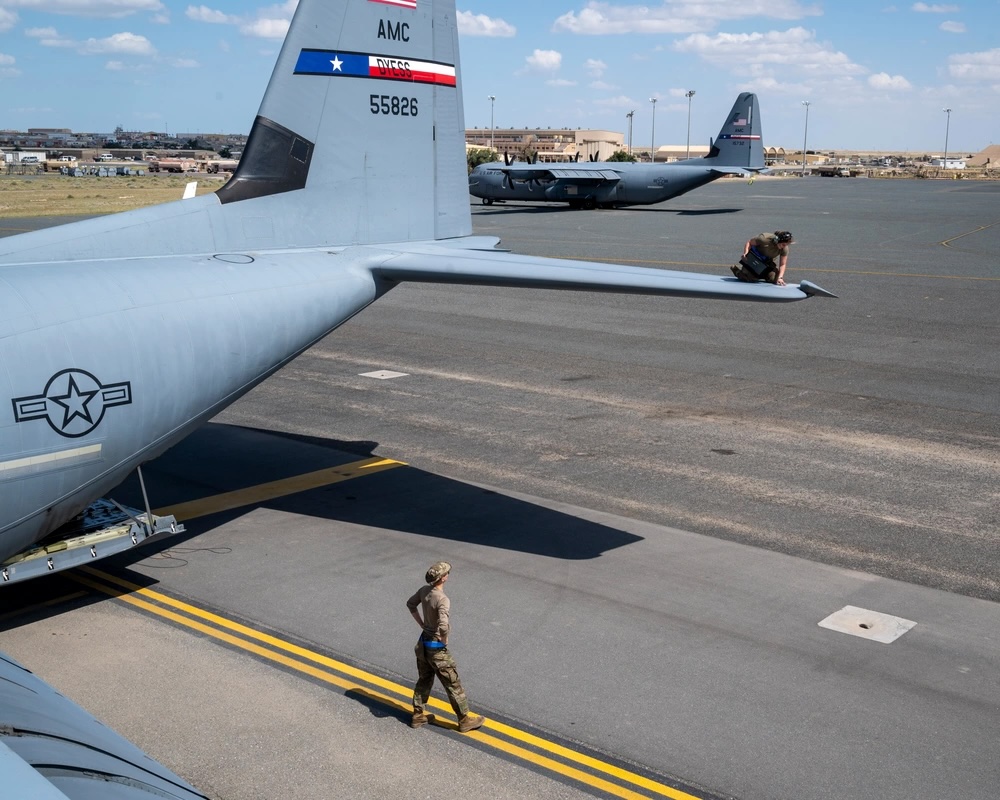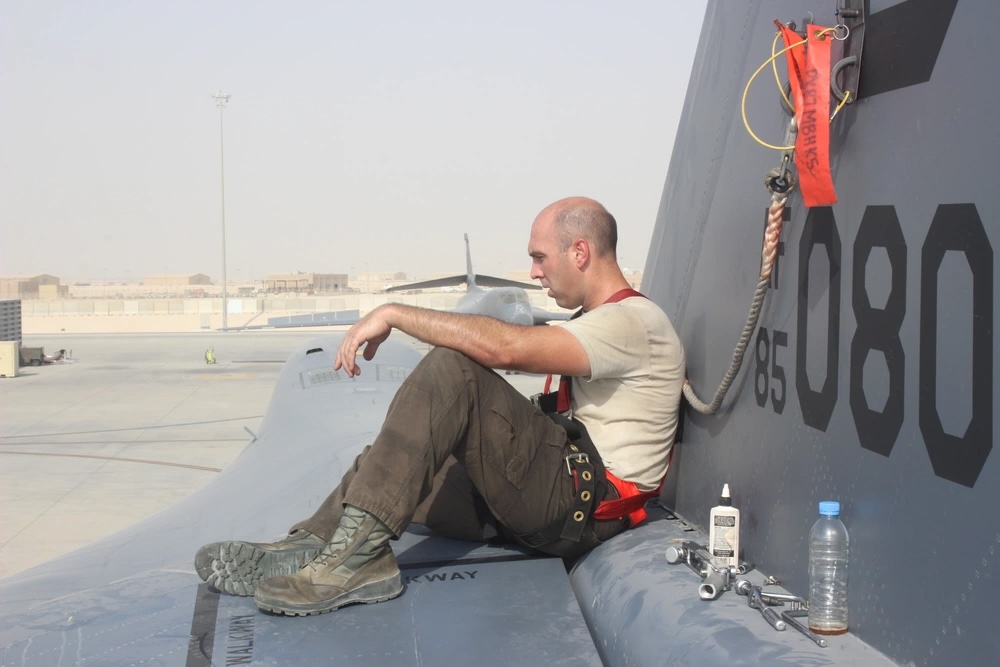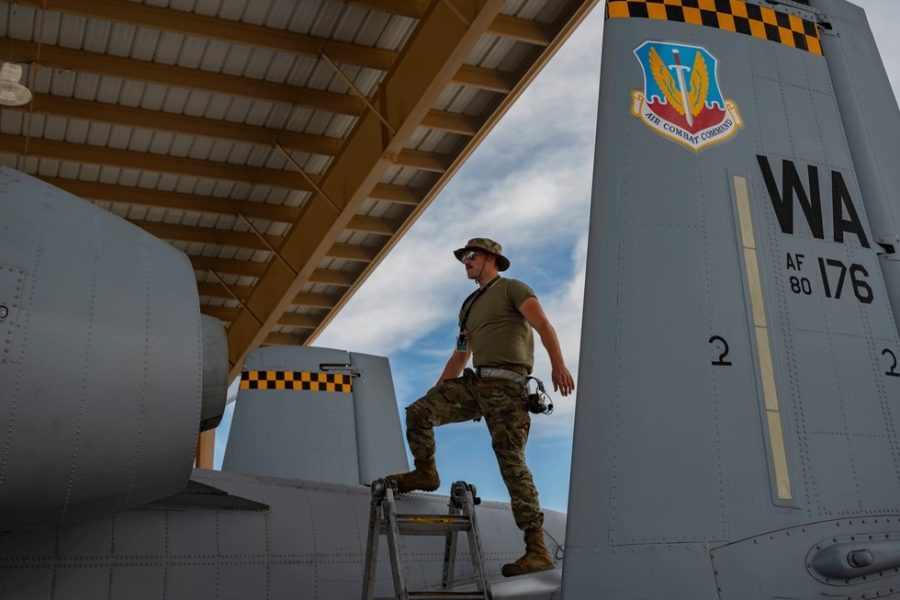A social media storm kicked off earlier this month after the commander of the 99th Air Base Wing at Nellis Air Force Base, Nev., was denied permission to authorize his Airmen to wear camouflaged floppy campaign hats, known popularly as boonie hats, to better weather the intense heat of the Las Vegas summer.
The denial sparked an outcry among Airmen and others on the unofficial Air Force subreddit and the Air Force amn/nco/snco Facebook page, where users criticized as unfair the decision by Gen. Kenneth S. Wilsbach, the head of Air Combat Command, to deny Col. Joshua D. DeMotts’ request. They cited the extreme summertime heat in not only Nevada, but across the continental U.S. Many said the decision exposed maintainers and other flightline Airmen to heightened skin cancer risks.
Wilsbach’s decision appears to conflict with other Air Force regulations authorizing commanders to ensure a safety and healthy working environment, but that authority varies based on the type and location of the Air Force unit involved.
As it turns out, Airmen on the Nellis flightline are allowed to wear boonie hats—and have been for at least 18 years, according to a spokesperson at Nellis Air Force Base. Department of the Air Force Instruction (DAFI) 21-101, which governs aircraft and equipment maintenance management, authorizes the commander of the 57th Maintenance Group, which oversees flightline maintenance at Nellis, to designate personal protective equipment (PPE) for maintenance Airmen on the flightline based on guidelines from the federal Occupational Safety and Health Administration (OSHA), the spokesperson said.
The trouble for DeMotts is that most of his Airmen work on the main base, not the flightline. The non-flying 99th Air Base Wing oversees base operations and support functions, while the 57th Wing, of which the 57th Maintenance Group is a component, oversees much of the flightline activities.
DeMotts sought relief for his Airmen in July. “Due to extreme heat at Nellis AFB that tops 120-degrees during the summer, it is imperative to adjust aspects of the uniform to ensure appropriate protection is afforded to our Airmen performing their duties,” the colonel wrote in his memo to Wilsbach. “The boonie hat will allow the relief of excess body heat and protection for the neck and face from the intense summer sun.”
Wilsbach denied the request. When asked why the request was denied, his staff said in a response to Air & Space Forces Magazine: “Local commanders may request exceptions to policy outside of current Department of the Air Force instruction, and it is within the ACC commander’s authority to approve or disapprove.”
The situation seems to be different for flightlines: Air Force guidance states “each base will develop a local flightline clothing policy that addresses wearing of hats, badges, and passes aimed at [foreign object debris] prevention while considering climate and safety.”
The Nellis spokesperson said that authorizes the 57th Maintenance Group commander to consider not only wide-brimmed hats, but also shorts, lightweight work pants, ballistic sunglasses, and other forms of PPE clothing. That authority also lines up with OSHA’s direction that “employers are to use effective forms of protection such as wide-brim hats and long sleeve clothing,” the Nellis spokesperson pointed out.
However, other Airmen who work outside, such as Security Forces, civil engineers, and communications specialists, are not covered by flightline policies. The Nellis spokesperson said recent revisions to Department of the Air Force Instruction 36-2903, which governs dress and personal appearance, raised the waiver authority required to permit boonie hats for those Airmen all the way to the top of the major command, which for the 99th Air Base Wing is ACC.
“This applies to portions of the main base,” said the Nellis spokesperson. “Main base is defined as being outside of the flight line, weapons storage area, and other similar areas.” That’s why DeMotts, as the commander of a non-flying air base wing, had to ask ACC headquarters for permission to authorize boonie hats.
The complicated lines of authority seem to conflict with a separate Air Force instruction directing unit commanders to “provide workers a safe and healthy work environment … including thermal illness prevention.”

Making matters even more complicated is an ongoing concern over standards and military discipline, fueled in part by the Air Force’s sweeping preparations for possible future conflict with China. In June, Wilsbach ordered inspections for the nearly 80,000 Airmen under his command to ensure they were meeting dress and appearance standards.
“[W]hile the majority of Airmen maintain professional standards, there is a discernible decline in the commitment to, and enforcement of, military standards in the Air Force,” he said at the time, arguing that attention to standards is essential to prepare for near-peer conflict.
“What I learned many years ago is if you pay attention to the details, when it gets hard and you need to do something difficult, because you’ve been disciplined to pay attention to the details, you can be good and you can succeed,” he said earlier this summer.
In July, a supplement dated May 20 circulated through social media that would limit the use of cold weather clothes such as beanies and fleeces to only certain colors, places, and times of year for Airmen assigned to ACC. While the supplement was in draft form and had no expected date of being implemented, Airmen assigned to bases that are cold most of the year, or who work in heavily air-conditioned data centers, worried what the changes would mean for them.
But while the Air Force values standards, some standards are enforced more than others. Retired Master Sgt. Chris McGhee, a former F-16 fighter jet maintainer, said regs for “Black Flag” extreme heat days require 20 minutes of moderate physical work be followed by 40 minutes rest, or 70 minutes of work followed by several hours’ rest.
“Certainly, on the flightline we sought shade and rest where we could, but it was a running joke that we were even close to this work/rest cycle,” said McGhee, who is now a VA disability attorney.
The Air Force wants to train how it fights, but some dress and appearance standards change depending on one’s proximity to the fight. For example, Air Force regulations allow Airmen to wear boonie hats while deployed but not at home station unless authorized by their major command, despite many home stations being just as hot as bases across the Middle East.
McGhee recalled weeks at Luke Air Force Base, Ariz., located about 240 miles southeast of Nellis, where the reported temperatures pushed north of 115 degrees, while the actual temperature on a hot concrete ramp surrounded by F-16s may have been north of 130 or 140 degrees.
“At the time I had a two-gallon water jug that I used at work, and I was drinking two of those per day,” he said. “My T-shirt was caked with salt from my sweat and at the end of the day was stiff as if I had used an excessive amount of starch.”

Air Force patrol hats or baseball caps are authorized more widely than boonie hats, but boonie hats provide better protection from the sun and greater relief from the heat, according to the Australian government’s Radiation Protection and Nuclear Safety Agency, though the agency cautioned that any hat needs to be combined with other protections such as sunscreen, sunglasses, and proper clothing to be effective.
Though not bald, McGhee wound up getting a biopsy about halfway through his career for some concerning moles on his scalp.
“They were determined to be potentially cancerous and they were removed, which ended up giving me visible scars on my head,” he said. Air Combat Command declined to respond to concerns on social media that greater exposure to the sun contributes to skin cancer.
There are plenty of vectors for carcinogens in the Air Force, such as firefighting chemicals, dilapidated dormitories, and radiation-emitting radars and jamming equipment. But social media users pointed to boonie hats as a low-lift way to reduce the risk and improve quality of life. Fort Bliss, Texas, authorized boonie caps for Soldiers back in October to offer some relief from the El Paso sunshine.
McGhee argued that waivers to Air Force regulations are supposed to serve as a pathway for common sense solutions to specific problems.
“When people or organizations submit waivers that are common sense solutions, and those waivers are denied, it undermines the trust of those below the waiver authority that the authority either has the intelligence, empathy, or both that would make them a capable leader,” he said.
